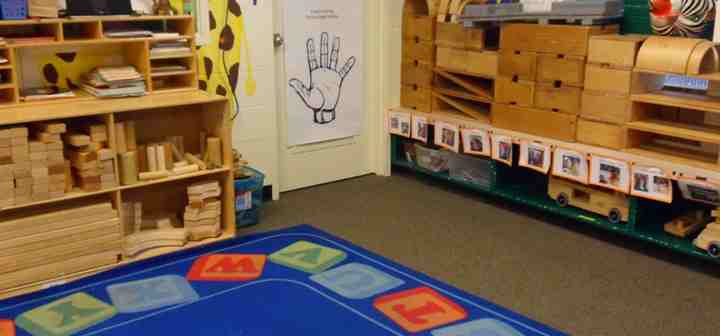
Blocks are great for every child care classroom. They come in all different shapes, sizes, colors, and textures. Children in child care can use blocks to support dramatic play, to build structures for toy cars, or to sort, count, and organize. Blocks are also extremely versatile, and with proper care they can last for years, if not a lifetime. Below are suggestions for choosing blocks and adding blocks to your classroom.
Choosing Blocks
Many different types of blocks are available for the early childhood classroom. Blocks can be large or small, wooden or plastic, colorful or plain. Blocks come in many sizes and shapes such as cylinders, cubes, cones, bridges, etc. You may prefer foam or cardboard blocks for infants and toddlers because they are lighter and easier to manipulate, which can prevent injury. For older children with more developed fine motor skills, there are building bricks, such as Lego, Duplo, and Mega Bloks. There are also blocks for every age child in between. For more information on different types of blocks, check out Different Types of Blocks for Your Child Care Classroom.
A Child’s Eye View of the Block Center
To see an example of what block play looks like in child care, check out the following eXtension Alliance for Better Child Care video:
Tips for Setting Up a Block Center in Your Classroom
- Location: A good place for a block center is a corner of the room bordered by shelves. Make sure there is plenty of room for a couple of children to build together. The block center can be near the housekeeping center but should be as far away from the quiet area as possible.
- Display: Place the blocks on low, wide shelves that give children easy access. Make sure the shelves are sturdy and that they do not fall over easily. If possible, provide the block center with a rug, as children will be working on the floor. Place the non-block toys in containers on the shelves or on the floor where the children can reach them easily.
- Number of Blocks: Ideally, provide at least 40 to 60 unit blocks for each child allowed in the block area at the same time. If you don’t have that many blocks, build your collection slowly by adding new blocks each year, or consider sharing block sets between classrooms.
Adding Toys to the Block Center
You may also choose to provide certain toys in the block center. Choose toys that are made of wood, plastic, or heavy cardboard. Do not provide small pieces that young children can choke on. Child care providers should make sure that the blocks and toys have no sharp edges. Here are some toys that work well in the block center:
- trucks
- trains
- cars
- tractors
- boats
- planes
- interlocking wooden rails
- zoo and farm animals
- dinosaurs
- traffic signs
- toy people
For More Information
To find more information and ideas about block play, check out the following eXtension Alliance for Better Child Care articles:
- The Block Center in Child Care
- Different Types of Blocks for Your Child Care Classroom
- The Block Center in Child Care
- Three “Bs” in Child Care: Blocks, Balls, and Books
For more information about how to use learning centers as part of the early childhood curriculum, you may also want to check out these articles:
- Using Learning Centers in Child Care
- Keys to Planning Successful Learning Centers in Child Care
- Toys and Materials in Child Care
Photo by Diane / CC BY http://creativecommons.org/licenses/by/2.0/
